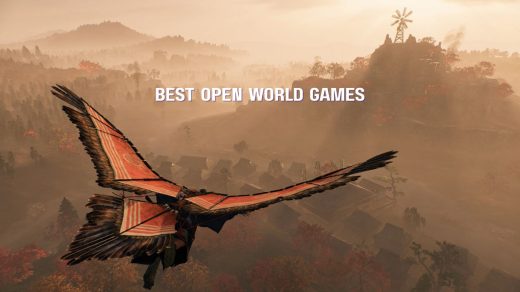Long before smartphones and ubiquitous apps, Dorling Kindersley (DK) carved a unique niche in the digital landscape. Renowned globally for their visually stunning, information-rich reference books (“Eyewitness” series, anyone?), DK ventured boldly into the burgeoning CD-ROM market of the 1990s and early 2000s.
The result? A fascinating, albeit now largely historical, collection of Dorling Kindersley computer games. These weren’t shooters or platformers; they were interactive explorations, digital extensions of DK’s core mission: making learning engaging and accessible through exceptional visuals and intuitive design.
What Defined Dorling Kindersley Computer Games?
Forget high-octane action. Dorling Kindersley computer games were pioneers in the “edutainment” space. They leveraged the vast storage capacity of CD-ROMs to deliver rich multimedia experiences directly tied to DK’s book publishing strengths:
- Visual Feast: True to their book heritage, DK games were packed with high-quality photographs, detailed illustrations, animations, and video clips. Exploring a topic felt like diving into a living, breathing DK encyclopedia.
- Exploratory Gameplay: The core mechanic was often exploration and discovery. Users navigated interactive landscapes, clicked on hotspots to reveal information, solved gentle puzzles, and followed thematic paths. Think digital museums or interactive documentaries.
- Thematic Focus: Titles covered diverse subjects mirroring DK’s book catalog: History, Nature, Science, Geography, and crucially, Travel. Games like My First Amazing History Explorer or The Ultimate Human Body became classics in homes and schools.
- Accessible Learning: Designed with clarity and user-friendliness, these games aimed to make complex topics understandable and enjoyable for a wide age range, often families.
How Did These Dorling Kindersley Games Work?
Playing a Dorling Kindersley computer game was a distinctly different experience. Typically installed from CD-ROM (requiring significant hard drive space for the era!), the interface was usually a central hub or a navigable map. Users would:
- Click to Explore: Search through themed environments (e.g., a human body, a historical timeline, a world map).
- Interact with Media: Clicking on objects or areas triggered pop-up information windows, narrated explanations, animations, video clips, or photo galleries.
- Complete Activities: Simple games, quizzes, and puzzles were embedded to reinforce learning. These might involve matching historical artifacts to periods, identifying animal tracks, or solving geography-based challenges.
- Follow Guided Paths: Some games offered structured “tours” or quests, while others encouraged pure, open-ended exploration.
The magic lay in the seamless integration of vast amounts of curated, high-quality DK content within an intuitive, point-and-click framework. It was less about winning and more about the joy of discovery.
The Spotlight: Dorling Kindersley Travel World Computer Game
Perhaps the most ambitious example encapsulating DK’s global vision was the Dorling Kindersley Travel World computer game. This title aimed to be nothing less than a digital atlas and travel guide. Users could:
- Explore a 3D Globe: Spin a virtual globe and zoom into continents and countries.
- Dive Deep into Destinations: Select a country to access a wealth of information: key facts, stunning photography, cultural insights, historical timelines, video footage of landmarks, and even basic language phrases.
- Plan Virtual Trips: The game sometimes included features allowing users to plot routes or learn about specific attractions.
- Interactive Quizzes: Test geographical knowledge through engaging challenges.
The Dorling Kindersley Travel World computer game exemplified the publisher’s strength in condensing vast geographical and cultural information into an engaging, visually driven interactive format. It turned armchair travel into an immersive, educational adventure.
Finding and Downloading Dorling Kindersley Computer Games Today
Officially, the era of new Dorling Kindersley computer games has passed. DK shifted focus as the software market evolved, particularly with the rise of the internet and mobile gaming. Consequently:
- No Official Sales: DK no longer sells or supports these legacy CD-ROM titles through mainstream retail or digital storefronts like Steam or GOG.
- Abandonware Status: Most of these games are now considered “abandonware” – software no longer sold or supported by the copyright holder. This creates a legal gray area for distribution.
- Finding Downloads: Enthusiasts and preservationists often share copies on abandonware websites (e.g., My Abandonware, Internet Archive). Searching for the specific game title + “abandonware” is the most common method.
- Compatibility Challenges: Running these old games (designed for Windows 95/98/ME or early Mac OS) on modern Windows 10/11 or macOS requires significant tinkering. Tools like DOSBox (for very old titles), PCem, or virtual machines running old operating systems are often necessary. ScummVM supports some later point-and-click style DK adventures. Be prepared for a technical challenge!
The Legacy of DK’s Digital Foray
While no longer active in the traditional PC game market, Dorling Kindersley computer games left a significant mark. They demonstrated how digital interactivity could powerfully enhance reference material, paving the way for modern educational apps and websites.
They brought DK’s signature visual brilliance and commitment to accessible knowledge into the digital realm, captivating a generation of learners.
For those who experienced them, titles like the Dorling Kindersley Travel World computer game remain fondly remembered portals to knowledge, embodying a unique moment where the world of books leapt dynamically onto the computer screen. They stand as fascinating artifacts of edutainment history.
FAQs About Dorling Kindersley Computer Games
- Can I still buy Dorling Kindersley computer games like Travel World?
- Officially, no. DK no longer sells or supports these legacy CD-ROM titles. They are primarily found as abandonware through enthusiast preservation websites, but downloading them resides in a legal gray area.
- Will DK computer games work on my modern computer?
- It’s unlikely to work “out of the box.” Games designed for Windows 95/98/ME or old Mac OS require emulation software (like DOSBox, PCem, or ScummVM) or a virtual machine running an old operating system to function on modern Windows or macOS. Expect some technical setup.
- What were some other popular Dorling Kindersley computer games?
Beyond Travel World, notable titles included My First Amazing History Explorer, The Ultimate Human Body, I Love Science, Eyewitness Encyclopedia of Science, Children’s Encyclopedia, and My First Amazing World Explorer. And several titles based on popular DK book series, like Star Wars.


